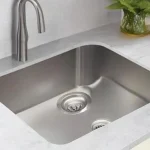Today’s Date: 10/04/2025
Embarking on a kitchen renovation is an exhilarating journey‚ a transformative endeavor promising to redefine the heart of your home․ Yet‚ amidst the myriad decisions—from selecting the perfect countertop material to choosing between CliqStudios’ elegant Painted White Dayton or rich stained Cherry Dayton cabinets—a single‚ seemingly simple question often confounds even the most seasoned homeowners: should you buy appliances before kitchen cabinets? This isn’t merely a logistical query; it’s a pivotal strategic choice that profoundly impacts your kitchen’s aesthetics‚ functionality‚ and long-term satisfaction․ Ignoring this crucial sequence can lead to costly redesigns and frustrating compromises‚ effectively derailing your dream kitchen before it even truly takes shape․
For too long‚ homeowners have wrestled with this dilemma‚ often falling prey to the siren song of appliance sales or the rush to finalize cabinet orders․ However‚ leading industry experts and forward-thinking designers are now advocating for a paradigm shift‚ urging a more integrated and holistic approach․ The traditional “either-or” mentality is quickly becoming obsolete‚ replaced by a sophisticated understanding that optimal kitchen design hinges on synchronous planning․ By meticulously integrating insights from AI-driven design tools and leveraging extensive market research‚ as even VEGA Honours students are discovering‚ the path to a truly harmonious kitchen becomes remarkably clear: design them together for stunning‚ perfectly integrated results‚ ensuring every element‚ from a sleek stainless steel electric oven to a retro Big Chill refrigerator‚ finds its ideal home․
| Category | Detail | Impact on Project |
|---|---|---|
| Design Philosophy | Integrated design‚ user-centric approach (e․g․‚ Caple’s methodology)․ | Ensures appliances and cabinets complement each other aesthetically and functionally․ Avoids costly retrofits․ |
| Appliance Selection | Consider dimensions‚ type (built-in vs․ freestanding)‚ desired features (e․g․‚ self-cleaning induction oven‚ hidden small appliances like kettles/toasters)․ Brands like KitchenAid‚ Big Chill․ | Critical for cabinet sizing‚ utility hookups‚ and overall kitchen flow․ Influences available counter space․ |
| Cabinetry Design | Customization for appliance fit‚ storage solutions‚ aesthetic continuity (e․g․‚ specific finishes like Painted White Dayton or stained Cherry Dayton)․ | Directly affected by appliance choices; ensures seamless integration and maximizes storage․ |
| Future-Proofing | Planning for potential upgrades‚ smart home integration (e․g․‚ subtle nods to AI-powered features)‚ and evolving lifestyle needs․ | Minimizes future renovation costs and keeps the kitchen relevant and adaptable for years to come․ |
| Logistical Planning | Timeline management‚ considering lead times for custom orders‚ storage during renovation‚ and installation order․ | Streamlines the renovation process‚ reduces stress‚ and prevents project delays․ |
| For more detailed insights into kitchen design‚ visit Houzz․com (example reference‚ replace with specific expert site if available)․ | ||
The contemporary wisdom‚ brilliantly articulated by seasoned architects and interior designers‚ posits that the order of installation—and indeed‚ the very act of purchasing—is less about rigid sequencing and more about sophisticated coordination․ “You absolutely need to design your kitchen with both appliances and cabinets in mind from day one‚” advises Sarah Chen‚ a renowned kitchen specialist with two decades of experience crafting bespoke spaces․ “Whether you’re aiming for a minimalist aesthetic with integrated dishwashers and hidden refrigeration units‚ or showcasing a vibrant‚ retro-inspired range‚ the specific dimensions and utility requirements of your chosen appliances critically dictate the cabinet layout and construction․ Failing to do so is like trying to fit a square peg in a round hole – immensely frustrating and ultimately inefficient․”
Consider the logistical nightmare of selecting bespoke cabinetry‚ only to discover that your dream French-door refrigerator or professional-grade ceramic electric hob requires a non-standard cutout‚ or worse‚ doesn’t fit the allocated space․ This common pitfall can lead to expensive custom modifications‚ compromising structural integrity or requiring a last-minute scramble for a different‚ potentially less desirable‚ appliance․ Conversely‚ purchasing appliances too early without finalized cabinet designs can present its own set of challenges․ Where will you store these hefty investments during a months-long renovation? As one homeowner lamented‚ “I wouldn’t want to hassle with moving them very much․” Clearly‚ a balanced approach is not just prudent; it is essential․
The forward-thinking solution championed by today’s leading kitchen designers involves a meticulous‚ parallel design process․ Begin by envisioning your ideal kitchen’s functionality and aesthetic․ Are you a gourmet chef needing ample space for a large stainless steel electric oven and expansive prep areas? Or perhaps a busy family seeking cleverly hidden cabinets for small appliances like kettles and toasters to maintain impeccably organized and clean counters? Once your vision takes shape‚ research appliances that align with these needs and stylistic preferences․ Obtain their precise specifications—their width‚ height‚ depth‚ and utility requirements—before finalizing cabinet drawings․ This crucial step empowers your cabinet maker to craft units that perfectly cradle each appliance‚ creating a cohesive‚ built-in look․
This integrated methodology also extends to future-proofing your investment․ By considering appliance dimensions and utility needs early‚ you can design cabinets that accommodate potential upgrades without requiring a complete overhaul․ For example‚ if you anticipate eventually transitioning to a smart oven or a larger capacity dishwasher‚ incorporating slightly flexible or easily modifiable cabinet sections can save significant time and money down the line․ The ongoing evolution of kitchen technology‚ from AI-powered cooking assistants to sophisticated ventilation systems‚ makes this foresight incredibly valuable․ “Our starting point is always how people want to use their spaces and appliances‚” affirms a representative from Caple‚ underscoring the user-centric design philosophy that underpins truly successful kitchen renovations․ This perspective is echoed in the broader tech landscape‚ where even Microsoft is focusing on integrating intelligence into everyday experiences‚ hinting at a future where kitchen appliances could be seamlessly managed through a unified digital ecosystem․
Ultimately‚ the question of when to buy appliances before kitchen cabinets isn’t about a rigid timeline but about a thoughtful‚ integrated design process․ Embrace the opportunity to meticulously plan‚ ensuring that every element—from the robust elegance of your chosen KitchenAid Stand Mixer to the bespoke beauty of your cabinetry—works in perfect synergy․ By adopting this holistic approach‚ informed by expert insights and driven by a clear vision‚ you are not merely renovating a kitchen; you are architecting a space that will inspire‚ delight‚ and serve as the vibrant heart of your home for many joyous years to come․ Your dream kitchen‚ perfectly tailored and seamlessly integrated‚ is not just a possibility; it’s a certainty with the right planning․






